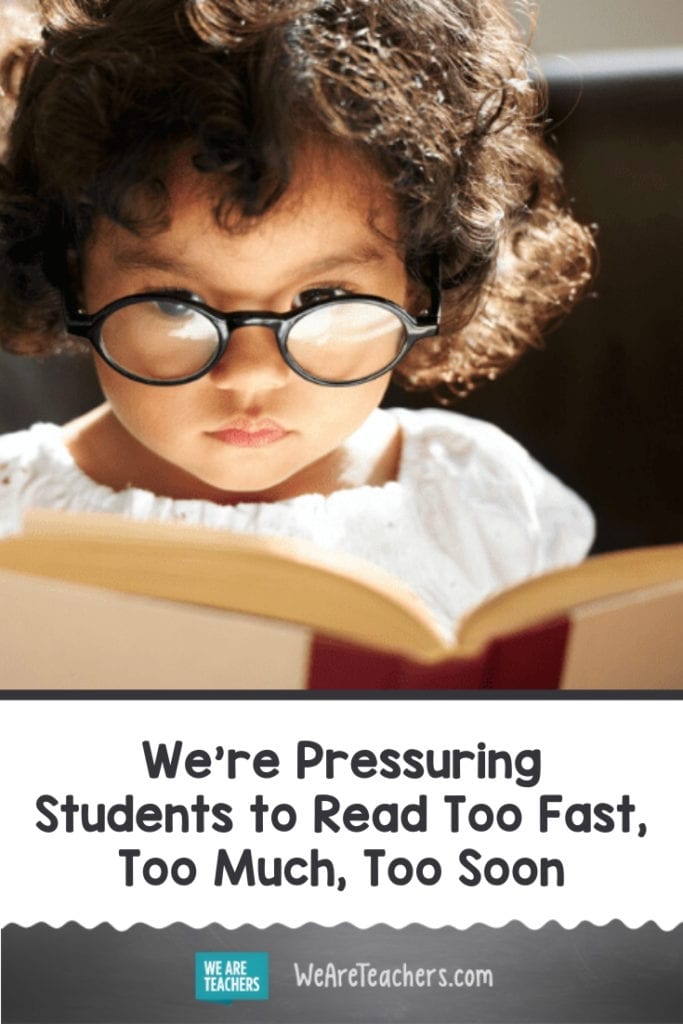If the pandemic has taught us anything at all, it’s the value of slowing down. So why hasn’t that translated to how we teach reading to our early learners? If there was ever a time to push back on developmentally inappropriate standards for beginning readers, it’s now. Because current practice is not only failing to produce children who love to read—it’s failing to even improve reading scores. Here’s why:
Too Soon
In the 1970s, kindergarten ran for half days and focused on play, walking in lines, and naps. Only 15 percent of students attended full-day kindergarten programs. By the mid 2010s, more than double that percentage of students attended state-run full-day PreK programs. Kindergarten standards are now PreK standards, and first grade standards are now kindergarten standards. But 4 and 5 year-olds haven’t changed. It’s our expectations that are unreasonable. Our students suffer failure after failure because we are in the wrong, and many develop anxiety about reading from their first experiences with it.
[contextly_auto_sidebar]
Too Fast
By kindergarten, students should be able to make sound-letter associations. Yet standards in many states require that kindergartners know all letters and all of their associated sounds by Winter Break. Lists of sight words for memorization begin in PreK. Both of these tasks require rapid memorization that activates short-term memory and makes learning to read drill-based. When it comes to reading, we move so fast that kids have little opportunity to become comfortable and find the joy in reading. Instead they are moved into analysis, being asked questions about main idea and inference in early elementary school. Learning anything too quickly creates holes in knowledge and skills.
Too Much
Beyond early elementary school, reading is assigned at a rate that just becomes too much. By third grade, students are expected to read to learn across content areas. By sixth grade, students have different teachers for each academic area. All of these teachers expect students to complete homework, read assignments, and respond to questions. If students become discouraged by the sheer amount of academic reading, they just won’t do the assignments, let alone read voluntarily. And the less practice they get, the lower their reading proficiency will be.
Reading is a gift—a window into worlds both real and imaginary. Recently it has become not much more than a forced method of information acquisition. We make students read so young, so fast, and so much that they become discouraged and stop wanting to do it. When was the last time you became proficient in something you didn’t want to do?
Interested in more articles like this? Be sure to subscribe to our newsletter!
Plus, Kindergarten During COVID Isn’t Kindergarten at All.


